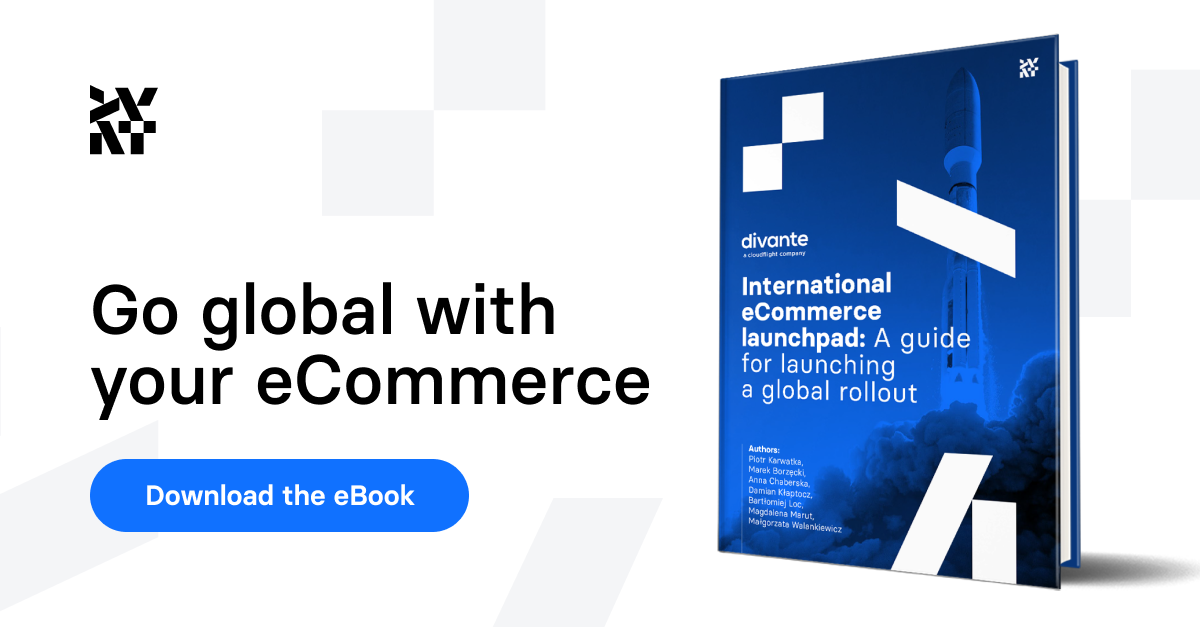Entering a new market is a step that allows manufacturers, suppliers, and other sellers to expand the spectrum of sales for their products from a specific local market to the wider world. It’s the ultimate time for scaling up that opens new potential sales with each new market.
The right kind of rollout can bring immediate success to an eCommerce platform entering new markets. However, getting it right as you take your store global while you have to adapt to each unique technical and business environment can be a tightrope walk. There are numerous places where you may stumble, but knowing which areas need to be analyzed before designing and developing an eCommerce platform ready for global rollouts will set you up for success.
Rollouts are the next great step in your business plan and can be a matter of growing or dying. Good preparation is the first defense you have against failure as you go global.
What should you analyze before a global rollout?
When we speak about rollouts from a technical point of view, we’re really just referring to the moment when an eCommerce platform goes live on a new market. However, that push of the button is at the end of the process. A global rollout impacts multiple areas of the organization, and each needs to be carefully considered before you build.
1. Market specifics
Each market has its own specifics, such as legal restrictions, the preferences of end customers, and habits regarding the use of tools related to eCommerce, like payment systems. These must be checked before designing an eCommerce solution for a global rollout. Payment systems, for example, have differing popularity among customers in each country. PayPal is popular in Germany, cashless methods, like Swish or QR codes, are found everywhere in Scandinavian or Asian countries, and the US is still strongly attached to card payments.
There are a couple of basic questions you have to ask about each individual country you enter. They can help you avoid nasty surprises and make sure that the rollout to a new territory will be profitable.
- Are there any customs restrictions that may stop you from sending goods to a country?
- Are there legal restrictions regarding the products or services you offer?
- What tax do customers have to pay on the goods they buy?
- Which payment method is most popular?
- What delivery options are available and which do customers prefer?
2. The landscape of the competition
Examining competing companies and products should be an integral part of developing a business strategy for international eCommerce. Observing competitors and following an analysis roadmap provides powerful insights into techniques already used on the market. It’ll also give you a look into indicators like product price, quality, or availability. This will help with differentiating a newly introduced brand or product on the market.
3. In-house team's potential
Providing specific services on a given market is only possible with an experienced team within the company. The in-house team must first learn the potential of new markets by identifying the most effective ways to develop. Then, they need to plan and run the rollout, and finally, handle the needs of new clients. This could be reflected in the efficiency and timing of delivery, integrations with local payment methods, or even in being able to communicate fluently with new customers.
If your team doesn’t have experience with the given market, consider hiring a new person to fill that gap. It will help you get a better grip on the clients' perspective so you can meet their expectations.
A vast majority, 66%, of surveyed eCommerce experts from the UK implement trending technologies with regular in-house teams.
eCommerce Trends Report by Divante
4. eCommerce toolset
To sell in new markets, you must have an eCommerce system that is able to handle the sales process in a given market. It has to be flexible enough to adjust to the specifics of other markets to ensure an effective implementation process in the next steps of a global rollout. A short time to market is key here.
Most popular eCommerce platforms offer basic support tools for launching on multiple markets. For example, multiple domains for more than one store, various languages, and multiple currency options, but each of them has its own specifics. Some eCommerce platforms might not support the payment methods or delivery methods popular in a given market. In cases like these, it will be necessary to develop a non-standard platform or integration. This can significantly extend the time and cost needed to enter other markets.
If your current eCommerce platform isn’t flexible enough for quick new market rollouts, consider building a separate proof of concept. It can be a small project created on an entirely new platform that will let you establish a presence in a new market and verify your assumptions with minimal investment. The best tool to achieve that will be a software-as-a-service eCommerce platform that will let you keep time to market as short as possible.
5. Consider the logistics
Implementing an eCommerce site on a new market concerns more than just sales processes that should be followed with seamless order management and delivery services. For some of the target groups, the delivery time and cost may be critical condition that impacts purchasing decisions.
Consider companies with a well-developed warehouse infrastructure in Europe with plans to begin a sales process in the U.S. As a result of entering a market on a new continent and needing to ensure a short delivery time, the company might need to open local warehouses or establish cooperation with a local delivery provider.
6. Internal processes and tools
When considering a global rollout, it’s also necessary to audit existing processes and tools within the company. Ask about systems supporting product management processes, like product information management (PIM) systems, fiscalization with enterprise resource planning (ERP) and system applications and products (SAP) systems, customer relationship management (CRM) systems, or loyalty solutions. Do these systems meet the requirements of a given market? Do they allow for effective integration with other eCommerce systems or solutions?
A good example is product-related information and content. Say we currently present our products in English and are planning to enter a market where English is not the first language. We must be sure to provide effective translations, which strongly impact conversion rates, for any product information into the local language. We also have to adjust our store to the local fiscal system and other legal requirements of the given market, like taxes, returns, etc.
Leverage knowledge and experience of experts that cleared the path for global rollouts
When you plan a global rollout, using the help of people and companies that went through the same process will save you a lot of money. Their insights and practical experience will help you avoid mistakes and seize opportunities.
In the end, a proper international rollout will be worth it. I remember the confession of one of our clients. They said, “My company almost went bankrupt entering the British market. Now that we’ve learned how to work with British clients, it became our most profitable market.”
If you need a hand with your own international expansion, grab our eBook on global rollouts or simply reach out to our team.
Published April 28, 2022













